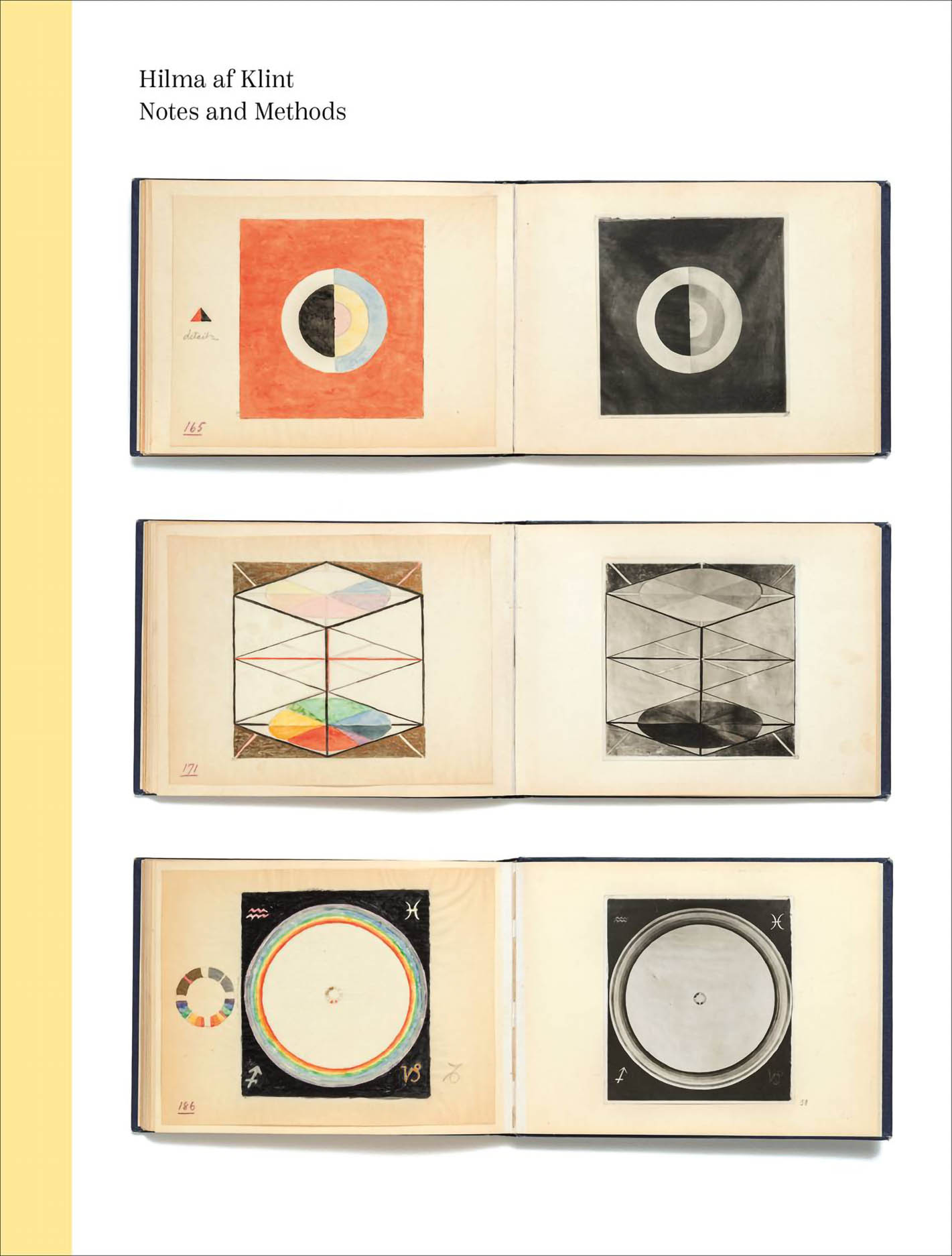Hilma af Klint: Notes and Methods
Translator: Elizabeth Clark Wessel
Author: Hilma Af Klint
Publisher: Christine Burgin/University of Chicago Press
Year of Publication: 2018
The first English translation of the artist’s madcap self-compiled dictionary [co-translated by Kerstin Lind Bonnier, Elizabeth Clark Wessel, and Anna Posten], is intended to explain the cryptic systems of words, symbols, colors, and letter combinations used throughout her work…Yet, the dictionary does little as a true clarification tool. What it reveals instead says more about the impulse to see and know everything, to the point in which this desire becomes defined by obsession.
–The Brooklyn Rail
At the turn of the century, Swedish artist Hilma af Klint (1862-1944) created a body of work that left visible reality behind, exploring the radical possibilities of abstraction years before Vasily Kandinsky, Kazimir Malevich or Piet Mondrian, acknowledged fathers of 20th century abstraction. Like many of her contemporaries, af Klint was interested in the invisible relationships that scientists at the turn of the century were discovering shape the world. She strongly believed in a spiritual dimension to the universe and devoted her life to an exploration of this realm.
Hilma af Klint’s process of investigation took many forms and drew on systems and symbols outside the traditional language of art. Notes and Methods traces the origins of her powerful abstract work. Included are the first mediumistic drawings she created with The Five; Flowers, Mosses and Lichens, a spiritual explication of the plant world; and the Blue Notebooks in which af Klint catalogued her most important body of work, The Paintings for the Temple.
Notes and Methods is the first extensive English translation of the writings of Hilma af Klint. In addition to translations of all notebooks reproduced, the book also includes Letters and Words Pertaining to Works by Hilma af Klint, an invaluable guide to the meaning behind the work compiled by Hilma af Klint herself.

